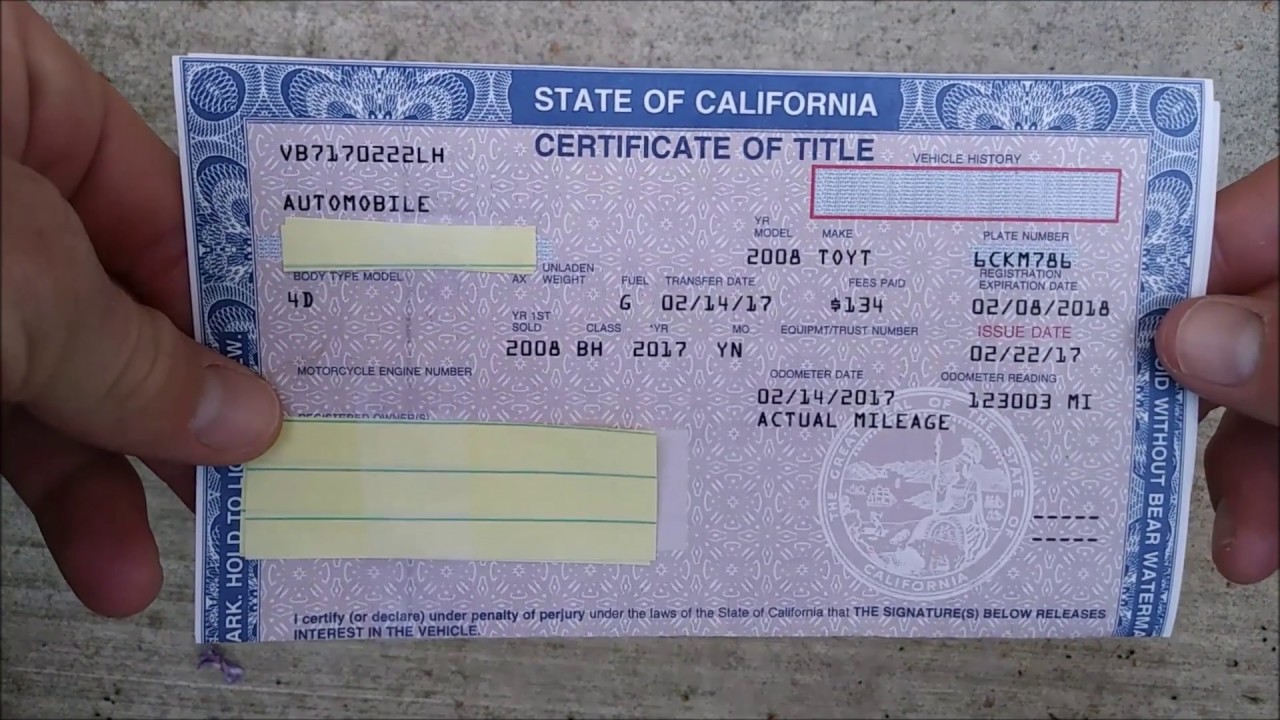What Is Pink Slip For Car?
A “pink slip” for a car, also known as a vehicle title, is an official document that proves ownership of a vehicle. It contains essential information like the owner’s name and address, the vehicle identification number (VIN), and details about the car’s make, model, and year. Historically, these documents were printed on pink paper in some states, which is how the term “pink slip” originated. Today, we will explain the importance of a pink slip, what it includes, and why it is crucial during the buying and selling process of a vehicle.

What Is A Pink Slip For A Car?
The term “pink slip” for a car is actually a slang term, though a widely used one, for the official document called a certificate of title.
Here’s the breakdown:
- Certificate of Title: This is the legal document issued by your state’s Department of Motor Vehicles (DMV) that proves ownership of a vehicle.
- Pink Slip: This nickname likely originated because these certificates used to be printed on pink paper, although that’s not always the case anymore.
The certificate of title is a crucial document throughout the entire lifecycle of your car ownership. Here are some of its key functions:
- Establishes Ownership: It serves as legal proof that you are the rightful owner of the car.
- Vehicle Sale: During a sale, the seller transfers the title to the buyer, finalizing the ownership transfer.
- Registration and Insurance: You’ll typically need the title to register your car and get insurance.
What’s On A Pink Slip?
Here are the key pieces of information typically found on a pink slip:

-
Owner’s Information: This includes the name and address of the legal owner of the vehicle. If the vehicle has multiple owners, their details will be included as well.
-
Vehicle Identification Number (VIN): The VIN is a unique 17-character number assigned to the vehicle that acts as its identifier. No two vehicles in operation have the same VIN.
-
Make, Model, and Year: This specifies the manufacturer (make), the model, and the year the vehicle was manufactured. This information helps in identifying the specific type of vehicle.
-
License Plate Number: The pink slip will display the vehicle’s license plate number, which should match the plates on the vehicle.
-
Odometer Reading: At the time of sale or transfer, the odometer reading is recorded to indicate the vehicle’s mileage. This helps to assess the amount of use the vehicle has had.
-
Date of Issue: The date on which the title was issued to the current owner.
-
Title Number: A unique number assigned to the title document for tracking and record-keeping purposes.
-
Lienholder Information: If the vehicle is financed or has any liens against it, the lienholder’s name and address will be listed. This indicates that another party may have a legal interest in the vehicle.
Advantages of a Pink Slip
Pink slips provide several advantages, primarily serving as a legal document for your car ownership. They become more than a piece of paper when you’re considering a title loan.
- Possibility for a title loan: A pink slip allows you to obtain a title loan, providing you the opportunity to access cash quickly. In this process, lenders place their name on your vehicle’s title, though you continue to use your car.
- Ease of transfer: It facilitates easy transfer of vehicle ownership, whether selling or buying. The pink slip includes necessary information for the registration process, ensuring smooth transactions.
- Proof of completion for driver’s ed course: A pink slip serves as a testament confirming your completion of a driver’s ed course. This certification plays a critical role when you’re applying for a provisional license at the DMV.
- Retaining your car’s investment: The pink slip offers you the chance to recoup the funds invested in your vehicle, even if you’ve just made a few initial payments on your loan.
What If I Lose My Pink Slip?
Losing your pink slip, or vehicle title, can be a cause for concern, but it’s a situation that can be resolved by following the correct procedures. Here’s what you can do if you lose your pink slip:

1. Contact Your Local DMV
The first step is to contact your local Department of Motor Vehicles (DMV) or equivalent agency. Each state has its own process for replacing a lost title. You will typically need to fill out an application for a duplicate title.
2. Provide Necessary Documentation
When applying for a duplicate title, you’ll need to provide certain documents to prove your identity and ownership of the vehicle. This may include your driver’s license, vehicle registration, and proof of insurance. You may also need to provide details like your vehicle’s VIN (Vehicle Identification Number), make, model, and year.
3. Pay the Replacement Fee
There will be a fee for issuing a duplicate title. This fee varies by state, so check with your local DMV for the exact amount.
4. Clear Any Liens
If there are any liens recorded against the vehicle, you may need to have these cleared or provide proof that there are no outstanding debts against the vehicle before a new title can be issued.
5. Wait for Processing
After submitting your application along with the necessary fees and documentation, you will need to wait for the DMV to process your request. This can take several weeks depending on the state.
6. Receive Your Duplicate Title
Once processed, the duplicate title will be mailed to you. Ensure that your current address is updated with the DMV to avoid any delays.
Frequently Asked Questions
How crucial are pink slips in car ownership?
Pink slips serve as legal proof of car ownership. Issued by the state’s Department of Motor Vehicles (DMV), they establish and validate ownership rights over a vehicle.
What additional benefits do pink slips offer?
Apart from establishing legal ownership, pink slips are instrumental in obtaining title loans, facilitating easy transfer of vehicle ownership, serving as proof of completion of a driver’s ed course, and helping retain the investment in the vehicle.
What challenges may arise without a pink slip during a car ownership transfer?
Without a pink slip, it becomes difficult to transfer car ownership or obtain a title loan. Therefore, ensure safe storage for your pink slip to avoid any ownership transfer issues.
When does a pink slip expire?
In California, a pink slip (drivers ed certificate) is valid until the holder is 17 and 1/2 years old. After reaching this age, you do not have to complete drivers education or drivers training lessons. However, you won’t be able to get your Californian driver’s license until you turn 18 years old.

Hi! I’m Larry Gibbs, studying mechanical engineering with a focus on cars. I really love Ferraris and write blog posts about the latest car stuff. When not studying or blogging, I’m usually on a road trip exploring new places. I also enjoy playing football and watching movies. Life’s an adventure, and I’m all about enjoying the ride!


![Where Are Ferraris Made? [Location Revealed]](https://www.experienceferrari.com/wp-content/uploads/2024/01/sfcriga_ferrari-factory-in-the-heart-of-the-myth_photo01-768x510.jpg)



